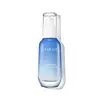What's inside
What's inside
 Key Ingredients
Key Ingredients

No key ingredients
 Benefits
Benefits

 Concerns
Concerns

 Ingredients Side-by-side
Ingredients Side-by-side

Hydrolyzed Collagen
EmollientWater
Skin ConditioningPropanediol
SolventAlcohol Denat.
AntimicrobialButylene Glycol
HumectantGlycerin
HumectantDimethicone
Emollient1,2-Hexanediol
Skin ConditioningGlyceryl Polymethacrylate
Hydroxyethyl Acrylate/Sodium Acryloyldimethyl Taurate Copolymer
Emulsion StabilisingAlcohol
AntimicrobialAcrylates/C10-30 Alkyl Acrylate Crosspolymer
Emulsion StabilisingHydrogenated Lecithin
EmulsifyingDisodium EDTA
Tromethamine
BufferingEthylhexylglycerin
Skin ConditioningSorbitan Isostearate
EmulsifyingSodium Methyl Stearoyl Taurate
CleansingHydrolyzed Lupine Protein
Skin ConditioningHydrolyzed Collagen, Water, Propanediol, Alcohol Denat., Butylene Glycol, Glycerin, Dimethicone, 1,2-Hexanediol, Glyceryl Polymethacrylate, Hydroxyethyl Acrylate/Sodium Acryloyldimethyl Taurate Copolymer, Alcohol, Acrylates/C10-30 Alkyl Acrylate Crosspolymer, Hydrogenated Lecithin, Disodium EDTA, Tromethamine, Ethylhexylglycerin, Sorbitan Isostearate, Sodium Methyl Stearoyl Taurate, Hydrolyzed Lupine Protein
Water
Skin ConditioningPropanediol
SolventGlycerin
HumectantSqualane
EmollientHexyldecyl Myristoyl Methylaminopropionate
EmollientIsostearyl Neopentanoate
EmollientMyristyl Myristate
EmollientPCA Dimethicone
Skin ConditioningSea Water
HumectantSaccharide Isomerate
HumectantPolyacrylate Crosspolymer-6
Emulsion StabilisingTromethamine
BufferingGlyceryl Caprylate
EmollientCarbomer
Emulsion StabilisingButylene Glycol
HumectantAcrylates/C10-30 Alkyl Acrylate Crosspolymer
Emulsion StabilisingEthylhexylglycerin
Skin Conditioning1,2-Hexanediol
Skin ConditioningParfum
MaskingDisodium EDTA
Chenopodium Quinoa Seed Extract
Skin ConditioningMagnesium Sulfate
Calcium Chloride
AstringentCitric Acid
BufferingSodium Citrate
BufferingPhenoxyethanol
PreservativeT-Butyl Alcohol
PerfumingCynara Scolymus Leaf Extract
Skin ConditioningManganese Sulfate
Skin ConditioningZinc Sulfate
AntimicrobialLecithin
EmollientBrassica Oleracea Gemmifera Extract
AstringentPhaseolus Lunatus Seed Extract
EmollientTocopherol
AntioxidantLepidium Sativum Sprout Extract
Skin ConditioningAscorbyl Glucoside
AntioxidantWater, Propanediol, Glycerin, Squalane, Hexyldecyl Myristoyl Methylaminopropionate, Isostearyl Neopentanoate, Myristyl Myristate, PCA Dimethicone, Sea Water, Saccharide Isomerate, Polyacrylate Crosspolymer-6, Tromethamine, Glyceryl Caprylate, Carbomer, Butylene Glycol, Acrylates/C10-30 Alkyl Acrylate Crosspolymer, Ethylhexylglycerin, 1,2-Hexanediol, Parfum, Disodium EDTA, Chenopodium Quinoa Seed Extract, Magnesium Sulfate, Calcium Chloride, Citric Acid, Sodium Citrate, Phenoxyethanol, T-Butyl Alcohol, Cynara Scolymus Leaf Extract, Manganese Sulfate, Zinc Sulfate, Lecithin, Brassica Oleracea Gemmifera Extract, Phaseolus Lunatus Seed Extract, Tocopherol, Lepidium Sativum Sprout Extract, Ascorbyl Glucoside
Ingredients Explained
These ingredients are found in both products.
Ingredients higher up in an ingredient list are typically present in a larger amount.
1,2-Hexanediol is a synthetic liquid and another multi-functional powerhouse.
It is a:
- Humectant, drawing moisture into the skin
- Emollient, helping to soften skin
- Solvent, dispersing and stabilizing formulas
- Preservative booster, enhancing the antimicrobial activity of other preservatives
Acrylates/C10-30 Alkyl Acrylate Crosspolymer is a synthetic polymer. It is used to thicken and improve the texture of products. Due to its properties, it can prevent water and oil ingredients from separating.
Butylene Glycol (or BG) is used within cosmetic products for a few different reasons:
Overall, Butylene Glycol is a safe and well-rounded ingredient that works well with other ingredients.
Though this ingredient works well with most skin types, some people with sensitive skin may experience a reaction such as allergic rashes, closed comedones, or itchiness.
Learn more about Butylene GlycolDisodium EDTA plays a role in making products more stable by aiding other preservatives.
It is a chelating agent, meaning it neutralizes metal ions that may be found in a product.
Disodium EDTA is a salt of edetic acid and is found to be safe in cosmetic ingredients.
Learn more about Disodium EDTAEthylhexylglycerin (we can't pronounce this either) is commonly used as a preservative and skin softener. It is derived from glyceryl.
You might see Ethylhexylglycerin often paired with other preservatives such as phenoxyethanol. Ethylhexylglycerin has been found to increase the effectiveness of these other preservatives.
Glycerin is already naturally found in your skin. It helps moisturize and protect your skin.
A study from 2016 found glycerin to be more effective as a humectant than AHAs and hyaluronic acid.
As a humectant, it helps the skin stay hydrated by pulling moisture to your skin. The low molecular weight of glycerin allows it to pull moisture into the deeper layers of your skin.
Hydrated skin improves your skin barrier; Your skin barrier helps protect against irritants and bacteria.
Glycerin has also been found to have antimicrobial and antiviral properties. Due to these properties, glycerin is often used in wound and burn treatments.
In cosmetics, glycerin is usually derived from plants such as soybean or palm. However, it can also be sourced from animals, such as tallow or animal fat.
This ingredient is organic, colorless, odorless, and non-toxic.
Glycerin is the name for this ingredient in American English. British English uses Glycerol/Glycerine.
Learn more about GlycerinPropanediol is an all-star ingredient. It softens, hydrates, and smooths the skin.
It’s often used to:
Propanediol is not likely to cause sensitivity and considered safe to use. It is derived from corn or petroleum with a clear color and no scent.
Learn more about PropanediolTromethamine helps balance the pH and improve the texture of a product. It is synthetically created.
As an emulsifier, Tromethamine prevents oil and water ingredients from separating. This helps stabilize the product and elongate a product's shelf life. Tromethamine also makes a product thicker.
Tromethamine helps balance the pH level of a product. Normal pH level of skin is slightly acidic (~4.75-5.5). The acidity of our skin is maintained by our glands and skin biome. Being slightly acidic allows our skin to create an "acid mantle". This acid mantle is a thin barrier that protects our skin from bacteria and contaminants.
Oral Tromethanmine is an anti-inflammatory drug but plays the role of masking, adding fragrance, and/or balancing pH in skincare.
1,3-Propanediol, 2-amino-2-(hydroxymethyl)-
Learn more about TromethamineWater. It's the most common cosmetic ingredient of all. You'll usually see it at the top of ingredient lists, meaning that it makes up the largest part of the product.
So why is it so popular? Water most often acts as a solvent - this means that it helps dissolve other ingredients into the formulation.
You'll also recognize water as that liquid we all need to stay alive. If you see this, drink a glass of water. Stay hydrated!
Learn more about Water